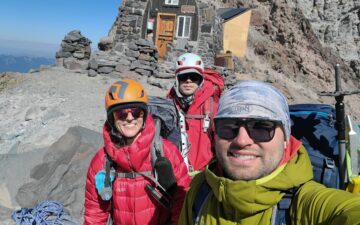Visiting Transdniestr: a Government Guide
.
In the West, Transdniestr is something of an enigma; its name conjures up images of people trafficking, smuggling and of a population subjugated by President Igor Smirnov in Tiraspol, sentiments it claims were created by a Moldovan Government propaganda campaign financed by the United States. Intrigued, I took up the invitation on the Transdniestrian Government’s website to “visit Pridnestrovie for yourself and judge what life is really like in this new corner of Europe.”
Yet arriving certainly felt like taking a step into the past. The army checkpoints and the communist insignia emblazoned across the border post, replete with ominous signs discouraging photography and manned by stony-faced officials created a tense atmosphere at the Nistru River.
Over the ‘border’ in Corjova there was little evidence of the utopian society its website depicted, and despite possessing a certain bucolic charm, the village was devoid of life, and only the sound of yapping dogs in the empty streets broke the eerie silence. But I wanted to “meet the people of this young nation,” although the residents in Corjova were less than keen to talk to me, despite the government’s claims that “ordinary Pridnestrovians will be happy to tell you the good, the bad and the ugly” of living in this pariah state.
The people appeared too scared and frightened to speak, afraid of repercussions from the government and gave little information about themselves, including one man who claimed I was “asking too many questions.” In Moldova I found the people to be open and hospitable, and eager to ask me as many questions about life in England as I had for them, but in Corjova I came up against a wall of silence. There may well be “no restrictions on talking to anyone, anywhere,” but getting them to answer is another matter.
Corjova’s behemoth is a great yellow church built with funds given by Moldovan President Vladimir Voronin, and was the only bright spot in a village that was just a ramshackle collection of houses and arid parks, threaded together by a few pot-holed roads. There was an unnerving sense of being watched wherever I went by a population suspicious and eager to keep in the background, including a scared young man scuttling down the street shouting “I swear I don’t know anything, I don’t know what happened.”
The expressions on peoples’ faces were of gloom and despair, and the atmosphere in Corjova was of a population stoically enduring life in this schismatic republic that seemed a world away from Moldova, despite it being just a short bus ride over the Nistru and its government proclaiming that life is “upbeat” in Transdniestr. “Compare us to either Moldova our to Ukraine, our two neighbours. When you do the comparison, you will discover that we compare very favourably indeed,” its website states proudly, although I left feeling distinctly unimpressed and like I just stumbled through a Soviet timewarp.
But I was able to find one true statement on its website; its tourism page correctly predicted that “by the time you return home, you will know the real facts about Pridnestrovie.”



